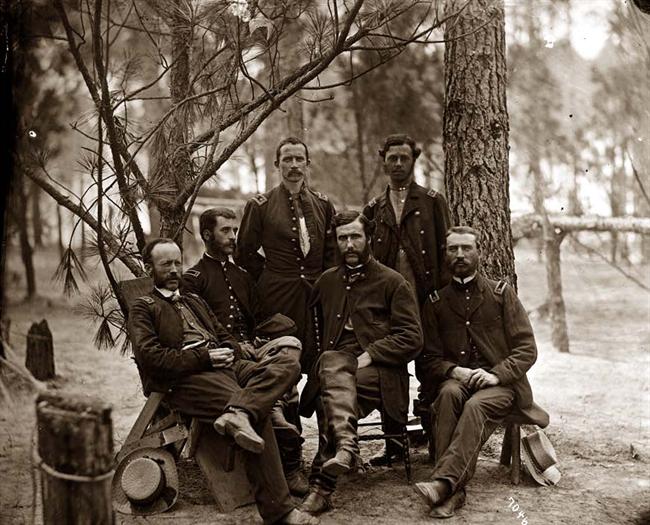

Civil War MedicineThe state of medical knowledge at the time of the Civil War was extremely primitive. Doctors did not understand infection and did little to prevent it. There was no attempt to maintain sterility during surgery. No antibiotics or antiseptics were available, resulting in minor wounds easily becoming infected and, hence, fatal.
"What a Medical Mess" TodayTypically, we recreate the type of medical care provided to soldiers in camp and in the immediate battlefield area - the type of activities that are both more common to the experiences of the actual Civil War soldier and more authentically within the parameters of most tactical events today.
Field Dressing StationFollowing Army regulations and protocol of the time, a team of medical personnel would establish a field dressing depot behind where their respective Regiment/Battalion was deployed in line of battle, just out of reach of the enemy's musketry fire. The team was usually led by the Surgeon* or Assistant Surgeon and staffed with Orderlies**, sometimes a Hospital Steward. Most Brigades would consolidate their resources and, establish a depot by Brigade.
** An Orderly is a male Nurse: which was usually a Private or low ranking NCO detailed by the Commanding Officer of the Regiment/Battalion to the Regimental Surgeon. Each medical officer should be accompanied upon the field by an Orderly, who carries the hospital knapsack, in which is placed a supply of instruments, dressings, &c. for immediate use. When the Surgeon stops to render aid to a wounded man, the Orderly at once un-slings his knapsack and opens it to hand out to the Surgeon the articles needed in dressing the patient. The medical officer should also be accompanied by two intelligent attendants, one of them a hospital steward where possible, to assist him in any operation he may perform upon the field. As a body of men would sustain injuries in battle, the wounded would be taken to the Field Dressing Station by the stretcher bearers or, if they could walk they would make their way back to the depot. Upon arriving, the Doctor would determine the condition of the injured and attempt to stabilize their conditions. Those wounds not too grave were evacuated first. Those deemed "mortal", were made as comfortable as possible, given pain relief and water, and made to wait. In the first year of the War, a wounded man had to get his self off of the field. Late 1862 and after-wards, the "mortally wounded" were the last to be evacuated (if they had not succumbed to their wounds by that time). A Regimental Surgeon Describes a Field Hospital and Field DepotSurgeon Albert G. Hart, 41st Ohio Infantry describes the following: Three assistant surgeons and one surgeon were detailed to follow each brigade. They established a temporary depot just out of reach of the enemy's musketry fire. Here the ambulances stopped. The detailed nurses with stretchers followed immediately behind the line of battle. The wounded men, if able to walk, with the permission of their company officers hurried back to the temporary depot. Those unable to walk were carried by the nurses on the stretchers. No soldier was permitted to leave the ranks to assist the wounded, unless to carry the dead and wounded back a few yards. Temporary dressings were applied. Serious operations only were performed in extreme cases at the temporary depot. Those unable to walk were taken in ambulances to the division hospital. There the serious work began, and was continued until the best thing possible in our surroundings was carried out for every man." ** Disclaimer **Please be advised, if you're looking for a "title" (be it mainstream, hard core, or whatever), you will not find it in this group. We are a group of like-minded individuals that take our impressions serious. If you cannot adhere to our standards, please do not bother. Regardless of your kit, you "WILL NOT" be ridiculed. If someone does, they will be dealt with accordingly. Not one of us in this hobby will ever be 100% accurate in our impressions. Those that are 100% accurate, have long been gone. It is their service and legacy that we must honor. Honor them by bringing history alive through the most accurate costumed interpretation possible. "What a Medical Mess" makes up the Hospital Department of the Western Federal Blues. You must be willing to adhere to their standards as well (which are similar to ours).
 Website Created and Maintained by Jimmy Nelson
Edited by Shelby Harriel
|